Venetian Food Dishes: Basic Overview
Common Ingredients
Common Cooking Methods
Courses
Meals
Key Taste
Eating Etiquette
Meal Presentation
Culinary Festivals
Influence and Fusion
Venetian Food Dishes: Origin and Region
Cuisine
Cuisine’s Geographical Territory
Country’s Region
Popular Types of Venetian Dishes
-
Sandwiches
Sandwiches in Venice come in a fun shape, often triangular, and are filled with a mix of tasty stuff like mayo, veggies, eggs, tuna, and meats.
English tea sandwiches inspire them and are perfect for a quick bite while exploring the city.
-
Fried dishes
Fried dishes are a big hit in Venice, with a variety of fish and seafood getting a crispy makeover.
These dishes are great as a big starter or a light bite, often enjoyed with a dash of sea salt and a squeeze of lemon.
-
Rice dishes
Rice dishes blend into both hearty meals and lighter fare, with risotto being a standout.
Rice is often cooked slowly in broth, sometimes with a dramatic black color from cuttlefish ink, or mixed with fresh peas for a dish that’s part risotto, part soup.
-
Cakes and pastries
Cakes and pastries have their special moments, especially during festivals like Carnival.
There are sweet fritters filled with goodies like pine nuts and raisins, and unique, crispy biscuits perfect for dipping in your morning coffee or dessert wine.
Venetian dishes are specialties associated with the city of Venice and its home region, Veneto, in Italy. These dishes are among the most famous delicacies in Italy, showcasing a bold Mediterranea character.
Seafood is the most widely used ingredient in Venetian cuisine. Locals prepare many dishes with fish, shellfish, mussels, clams, and other seafood varieties caught from the Venetian Lagoon.
Other important ingredients in Venetian cooking are olive oil, grains, and seasonal fruits and vegetables. Risotto and polenta are popular side dishes for various savory entrees.
Continue reading to find out more information about traditional Venetian food, including its main features, global popularity, and healthfulness.
After that, I will help you learn about the 13 most common dishes in Venice and Veneto, followed by an overview of local cuisine and recommended drink pairings.
13 Most Popular Venetian Dishes with Filters
The most famous 13 dishes from Venice are waiting for you! Scroll down and use advanced filters to simplify your reading experience, such as alphabetical sorting, main ingredients, taste, cooking methods, dish types, courses, and global popularity.
Next, check out filters based on specific culinary styles, such as traditional, national, street food, fusion, exotic, and vegetarian options.
Cicchetti
- Street Food
- Traditional
Cicchetti, literally “small bites,” refers to various snacks and appetizers in Venetian cuisine. It is highly similar to Spanish tapas or Mediterranean meze and served in a type of dining establishment known as bàcari.
Cicchetti often includes small slices of bread topped with various ingredients, from salami to cheese and cremated fish. Sometimes, Venetian small bites also include chicken wings, potato wedges, or even meatballs.
Depending on the number of dishes, cicchetti can be a fulfilling meal or a light afternoon snack. Locals usually serve it with champagne and wine.
Sarde In Saor
- Street Food
- Traditional
Sarde in saor is a simple Venetian starter made by frying breaded sardines and marinating them. Originally a means of preserving fish, it is now one of the region’s most well-loved delicacies.
Venetians usually add onions, vinegar, pine nuts, and raisins to heighten the flavor of this fish. These were historically inexpensive ingredients that the working class of Venice could purchase back in the old days.
Interestingly, sarde in saor tastes better the next day after it is made, so locals often refrigerate the fried sardines for later.
Baccalà Mantecato
- Street Food
- Traditional
Baccalà mantecato is a classic Venetian cod-based dish with origins deeply rooted in the maritime history of Venice. Its history began with a merchant named Pietro Querini, who learned how to make salted cod in Norway after being shipwrecked there in the 15th century.
Pietro Querini introduced salted cod to Venice, and in the 18th century, baccalà mantecato was created as a more elaborate preparation of the fish dish and quickly became popular.
To make baccalà mantecato, locals poach salted cod in water or milk, break them in the bowl, and whip them with olive oil until the sweet and savory mixture becomes smooth and fluffy like mousse.
“Mantecato” means “whipped/ beaten,” referring to the preparation process. Baccalà mantecato is a well-liked family dish to serve alongside crusty bread or fried polenta during Christmas.
Risotto Al Nero Di Seppia
- Traditional
Risotto al nero di seppia is a famous Venetian rice dish with a striking black color. It is prepared like regular risotto, a typical Italian dish of rice cooked in broth, but dyed with the ink of cuttlefish (seppia).
Although people still debate where risotto al nero di seppia actually originated, this black rice dish is a staple in the region’s food scene. This creamy and silky rice dish often includes pieces of cuttlefish or squids for a richer flavor.
Fegato Alla Veneziana
- Traditional
Fegato alla Veneziana, literally “Venetian-style liver,” is a traditional Venetian dish dating back to ancient Rome. It consists of thinly sliced calf’s liver sautéed with onions in olive oil, with butter, vinegar, and parsley being possible additions.
The spicy sweetness of onions is an excellent match for the strong taste of the liver, nicely balancing the flavor of fegato alla Veneziana. This liver-based dish goes well with a side of fried polenta.
Polenta E Schie
- Traditional
Polenta e schie is a versatile Venetian dish prepared with polenta and sautéed schie. Polenta is a staple dish made of boiled cornmeal, while schie refers to tiny gray shrimps in the Venetian lagoon.
Originally a dish for impoverished locals, polenta e schie can now also be found in fancy restaurants. This shrimp and cornmeal dish is sometimes an expensive delicacy due to the scarcity of schie.
In addition, authentic polenta e schie is usually served during the winter months due to its seasonal characteristics.
Bigoli In Salsa
- Traditional
Bigoli in salsa is a classic Venetian pasta dish that originated in medieval times. It was formerly a cheap dish for poor peasants, though locals from all walks of life now dearly love it.
Bigoli is a type of thick, whole-wheat spaghetti made with a special press called a bigolaro. Meanwhile, salsa refers to a simple sauce made by sautéing onions and salt-cured fish, such as anchovies or sardines, until their flavors melt into the rich, savory sauce.
In the past, onions and sardines were the cheapest foodstuffs, hence their use in bigoli in salsa. Enjoying a plate of this meat-free pasta with a glass of white wine while enjoying the picturesque canal view in Venice is a great delight.
Risi E Bisi
- Traditional
Risi e bisi, literally “rice and peas,” is a well-known Venetian rice dish that blurs the line between a soup and a risotto. It is prepared by cooking Vialone Nano rice, fresh peas, onions, pancetta, and butter in a broth made of pea pods.
According to locals, risi e bisi should only be made with peas from Chioggia (a beach village in the South of Venice). The best time to enjoy this rice and pea dish is in spring when Venetian peas are at their best.
Historically, risi e bisi was an offering presented by the peasantry to the Doge of Venice. The Doge used to stand in front of the Doge’s Palace with a plate of risi e bisi in his hands and salute his subject.
Today, risi e bisi is a common dish for the townspeople to consume on April 25, the feast day of Saint Mark, who is Venice’s patron saint.
Fritto Misto
- Street Food
- Traditional
Fritto misto, meaning “mixed fry” in Italian, is a Venetian dish composed of various fried fish and seafood. It hailed from the Veneto as a platter of fried meat and vegetables, but the recipe was changed to suit local ingredients when it reached Venice.
To make this “mixed fry,” people dip pieces of fish, cuttlefish, sardines, squids, and shrimp in batter and deep-fry them until they become golden and crunchy. You can eat fritto misto on its own or with sea salt and lemon juice.
While most Venetians eat fritto misto as an impressive entree or appetizer, some local vendors serve it in a paper cone so you can snack on it during the tour around the city.
Tramezzino
- Street Food
- Traditional
Tramezzino, literally “little in-between,” is a Venetian triangular sandwich made by stuffing crustless white bread with mayonnaise, vegetables, boiled egg, tuna salad, and cold cuts.
This Venetian sandwich was invented in 1925 as a substitute for English tea sandwiches, hence its similarity with the British sandwich bites served in afternoon high tea.
Venetians love to pack tramezzino as a convenient lunch or snack, with the humidity in Venice keeping the bread soft for a longer time. This sandwich is also a perfect on-the-go snack for tourists when they stroll around the city.
Fritole
- Street Food
- Traditional
Fritole, also known as Venetian fritter, is a traditional sweet pastry often served during the festivities leading up to Carnevale (Carnival) in Venice. It dates back to the Renaissance period.
Fritole is prepared by mixing a thick batter with pine nuts and raisins, deep-frying the fritters, and dusting them with powdered sugar. Though a festive treat, this type of sweet fritter is often sold year-round in Venetian pasticcerie (pastry shop).
Baicoli
- Traditional
Baicoli, literally “small fish,” is a beloved Venetian biscuit with a crisp, dry texture and a long, slender shape resembling a sea bass. It was historically prepared as a durable supply for fishing trips that could last for weeks.
The preparation of baicoli involves kneading the dough, letting it rise twice, and baking it two times in a row to draw out all the moisture in the bíscuit. This process is vital to the famous shelf life of baicoli.
Since baicoli is very dry, locals often dip this biscuit in some kind of liquid before eating, such as cream, dessert wines, or even coffee.
Buranelli
- Traditional
Buranelli is a widely enjoyed cookie in Venice. It originated on the island of Burano, which lies only a boat ride away from Venice.
There are two main types of buranelli: bussolà (with a hole in the middle) and essi (S-shaped). The name bussolà was derived from the word buso, which means “hole” in Italian.
Legend has it that ring-shaped bussolà was made by fishermen’s wives for their husbands going to sea, with the shape symbolizing a hug. Both versions of buranelli are popular desserts to enjoy after dinner with coffee.
After going over the most popular dishes Venice has to offer, you can now dive into the common features of this region.
What Is Special About Venetian Cuisine?
Learning about the three following factors will help you understand and appreciate the distinctiveness of Venetian cuisine.
Venice shares many culinary similarities with Italy and the broader Mediterranean region as it is part of both geographical spheres.
This characteristic leads to Venetian cuisine having many Italian dishes and having a strong liking for ingredients like fresh vegetables, fish, olive oil, and grains.
The Veneto region has an extensive coastline along the Adriatic Sea, making seafood a natural source of protein.
In addition, as Venice was historically a hub for trade and cultural exchange because of its favorable location, many ingredients and culinary techniques from other regions and countries were introduced to local cuisine.
The fertile plains of the Po Valley and the unique ecosystem of the Venetian Lagoon provide an abundant amount of fresh and seasonal ingredients, such as seafood, grains, vegetables, and fruits.
In particular, risotto and polenta are the traditional choices of starch in Venice, not pasta as in other Italian regions.
What Beverages to Pair With Venetian Dishes?
Among the many beverages enjoyed in Venice, the four types of drinks below are ideal options for pairing with Venetian dishes.
Wine
Venetian cuisine has many types of wine suitable for various dishes. White wine is a good match for cicchetti, risotto al nero di seppia, or fritto misto, while sweet or sparkling wine goes well with fritole, baicoli, and buranelli.
Cocktails
Iconic Venetian cocktails like Bellini and the Spritz are ideal for pairing with appetizers and snacks, including cicchetti and fritto misto.
Liqueurs
While locals often enjoy liqueurs after a meal as a digestif, you can also serve them with sweet treats like fritole, baicoli, and buranelli.
Coffee
Desserts and pastries like buranelli, fritole, and baicoli go well with many types of coffee available in Venice.
Which Venetian specialties do you want to try? Let me know your thoughts and opinions in the comment section. If you want to share your experience with Venetian dishes, I’m all ears, too! Anyway, don’t forget to share this list of Venetian dishes with your friends.




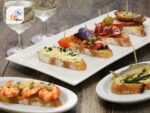
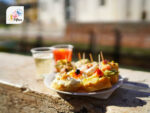
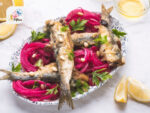
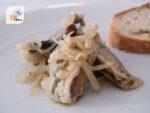
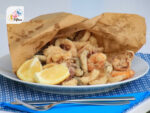

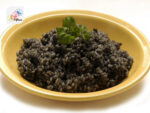


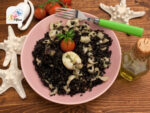



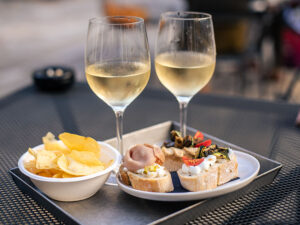
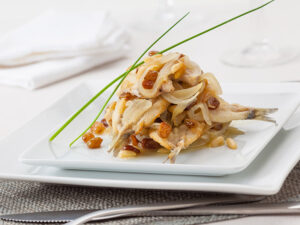
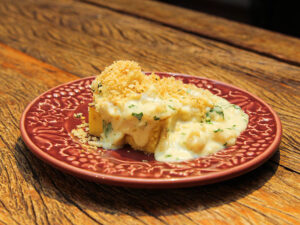
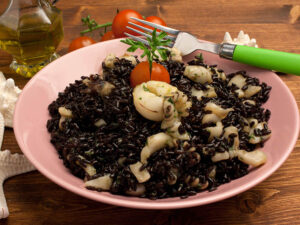
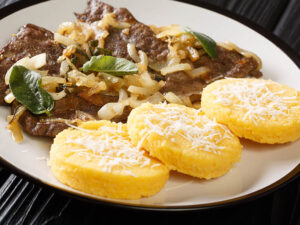
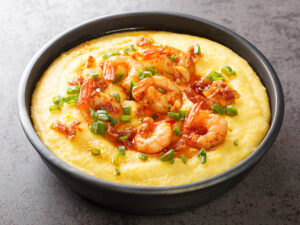
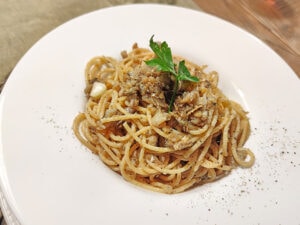
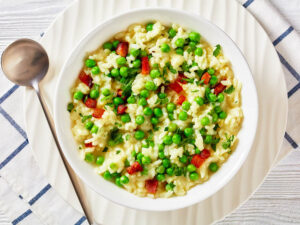
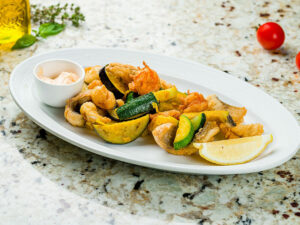
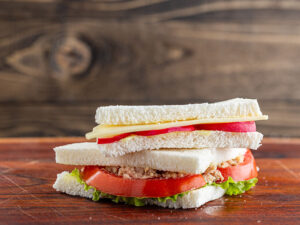
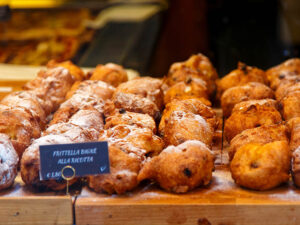
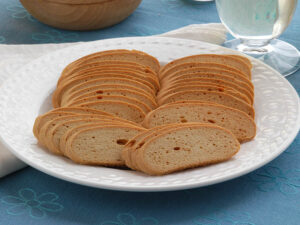

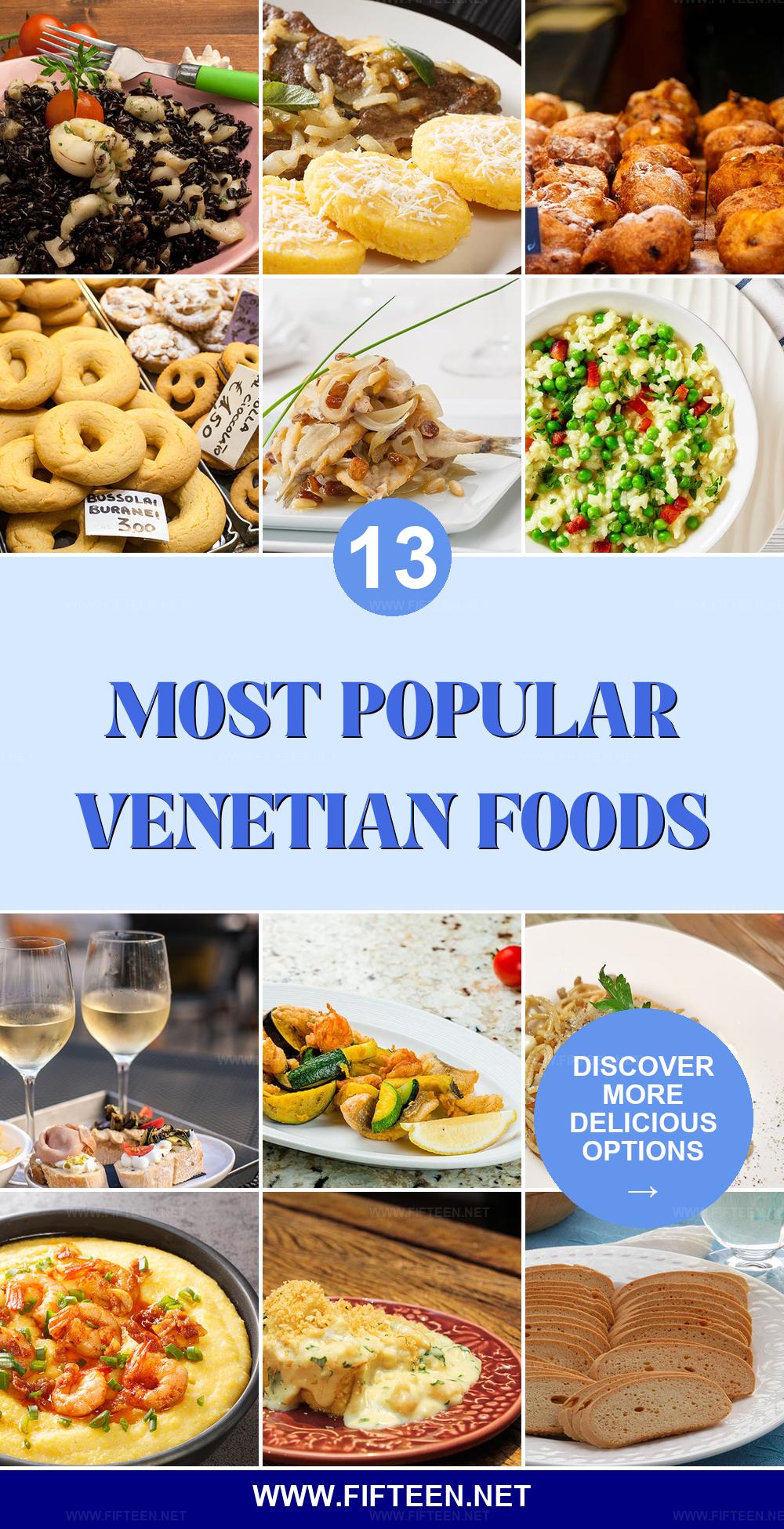
Jamie Scott
Editor in Chief, Senior Content Writer
Expertise
Home Cooking, Meal Planning, Recipe Development, Baking and Pastry, Food Editor, Cooking-video Maker, Western Food Evaluation Expert
Education
Le Cordon Bleu College of Culinary Arts
Local Community College, New York, NY
Jamie Scott is a skilled culinary expert and content creator specializing in Western cuisine. With over 15 years in the culinary field and formal training from Le Cordon Bleu, Paris, Jamie deeply understands how to blend nutrition with delicious flavors. His passion for cooking matches his commitment to making healthy eating accessible and enjoyable.
On Fifteen.net, Jamie brings a fresh perspective to classic dishes and beverages, offering readers insightful recipes, cooking tips, and a fresh view on meal planning that emphasizes taste, health, and simplicity.